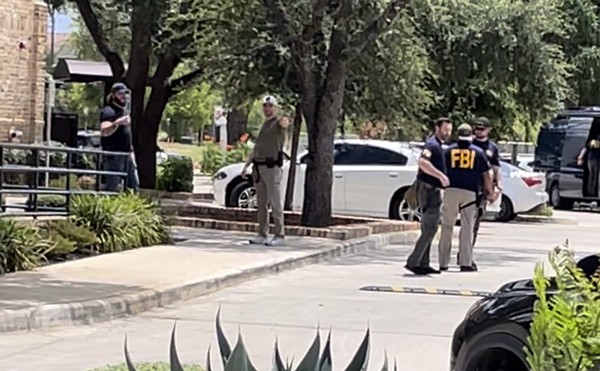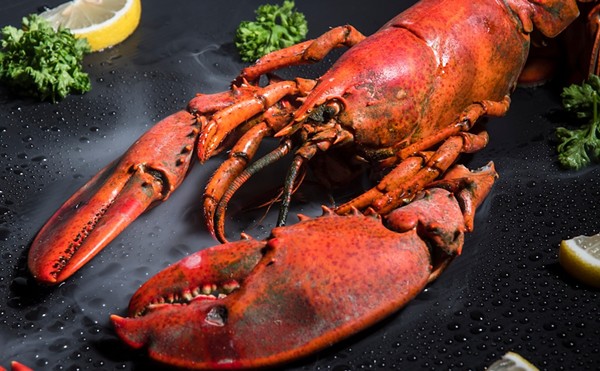In my neighborhood, dogs and possums have cornered the market on urban foraging. From the orange tree next door, peeled, mutilated rinds littered my backyard, left behind by the family of possums living under my house. In the evenings, three scrappy dogs across the street work their muzzles along the curb as if it were a trough, pulling questionable eats back to their yard. They’ll chase any kid with a grocery sack half a block down the sidewalk.
But far and wide, foodies and naturalists are bringing back the adventurous, at times arduous practice of rooting out edible plants for sustainable menu options, and San Antonio is far from a barren concrete desert.
A lot of native Texas landscaping is edible: sage, rosemary, chile pequin, pomegranate and prickly pear cactus to start. Plus, there’s an incredible range of flowers and “weeds” we can eat: clover, dandelion, mustard, sorrel and chickweed. You can brew tea from the blossoms and leaves of a bottlebrush tree. The tubers from canna lilies are edible like potatoes, and the young shoots are like asparagus. (Don’t uproot your flower bed; just store this tip for apocalypse survival skills.) Now, they say that mesquite pods are also edible, which sounds amusing, but I’ve heard mixed reviews on their flavor and use.
With a keen eye, survey the greenery in the cracks of sidewalks and find purslane for salad; in vacant lots, find dewberries for jam or bull nettle for seed roasting. Along the riverbank and in some backyards, you can find dollarweed to ferment for a spin on kimchi. And of course, there are the fruit and pecan trees throughout the parks and your friendly neighbors’ yards. (But before you go traipsing around, know this: It is illegal to trespass on private property to forage, so be sure to ask first. If a fruit, like an orange from a tree, is hanging over a public sidewalk, then pick with discretion.)
Mark Vorderbruggen, Ph.D., teaches classes on wild edibles at the Houston Arboretum and Nature Center, and runs Foraging Texas, a meticulously catalogued field guide to edible plants. Here you’ll find a comprehensive list of edible plants throughout Texas, including Bexar County. Entries are categorized by type, color, season and use, and a series of YouTube videos further aids in plant identification.
For Vorderbruggen—who goes by Merriwether online—and avid foragers like him, the key point of foraging is the exertion of walking and searching the landscape for food—“bending, stretching and digging.”
I, on the other hand, am a leisurely forager. During my walks in the park or along the river, I like to pick blackberries and loquats, nuts and stuff to taste, as it goes hand-in-hand with smelling the flowers and listening to the birds. It’s an added dimension to learning the rhythm of the seasons, observing what fruit is blooming and which is going to seed, to know the names of plants, their smells, their tastes and their uses. Plus, it’s just silly fun to nosh on flowers like elderberry, cow parsnip and nasturtiums, and finding a patch of dewberries is like stumbling upon a storybook scene.
For the tech-savvy set, NPR previously reported on Falling Fruit, an urban harvesting map in which community users can explore, edit and add locations of urban edibles. The developers are raising funds to launch a mobile app, but until then you can access the map through your mobile browser. While the map may be clunky, it led me to pomegranate and loquat trees near Mahncke Park and a pecan tree at the zoo. I added the fruit-bearing pomegranate tree near Harlandale Creek. It would be cool to see San Antonio’s map fill out with all the prickly pear cactuses off Roosevelt Street.
If you want to learn more about foraging, Wendy Snyder runs Star Fire Adventure Camp for Grown-ups. Snyder, a forager of wild edibles since she was a child and inspired by Euell Gibbons’ classic Stalking the Wild Asparagus, is presenting a talk on “Foraging for Native (and Other Wild) Edible Plants” at the next meeting for Native Plant Society of Texas-San Antonio (NPSOT). Contact [email protected] for details.
While urban foraging won’t fill you up, let’s face it, buying five sprigs of rosemary at H-E-B is the equivalent of buying bottled water in both silliness and environmental wantonness (all that plastic packaging!). Now get to digging.
Foraging for Native (and Other Wild) Edible Plants
Tue 6:30pm, May 27
Lion’s Field Park Clubhouse
2809 Broadway














